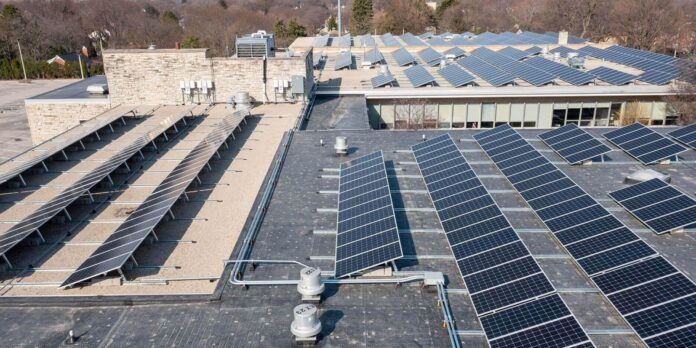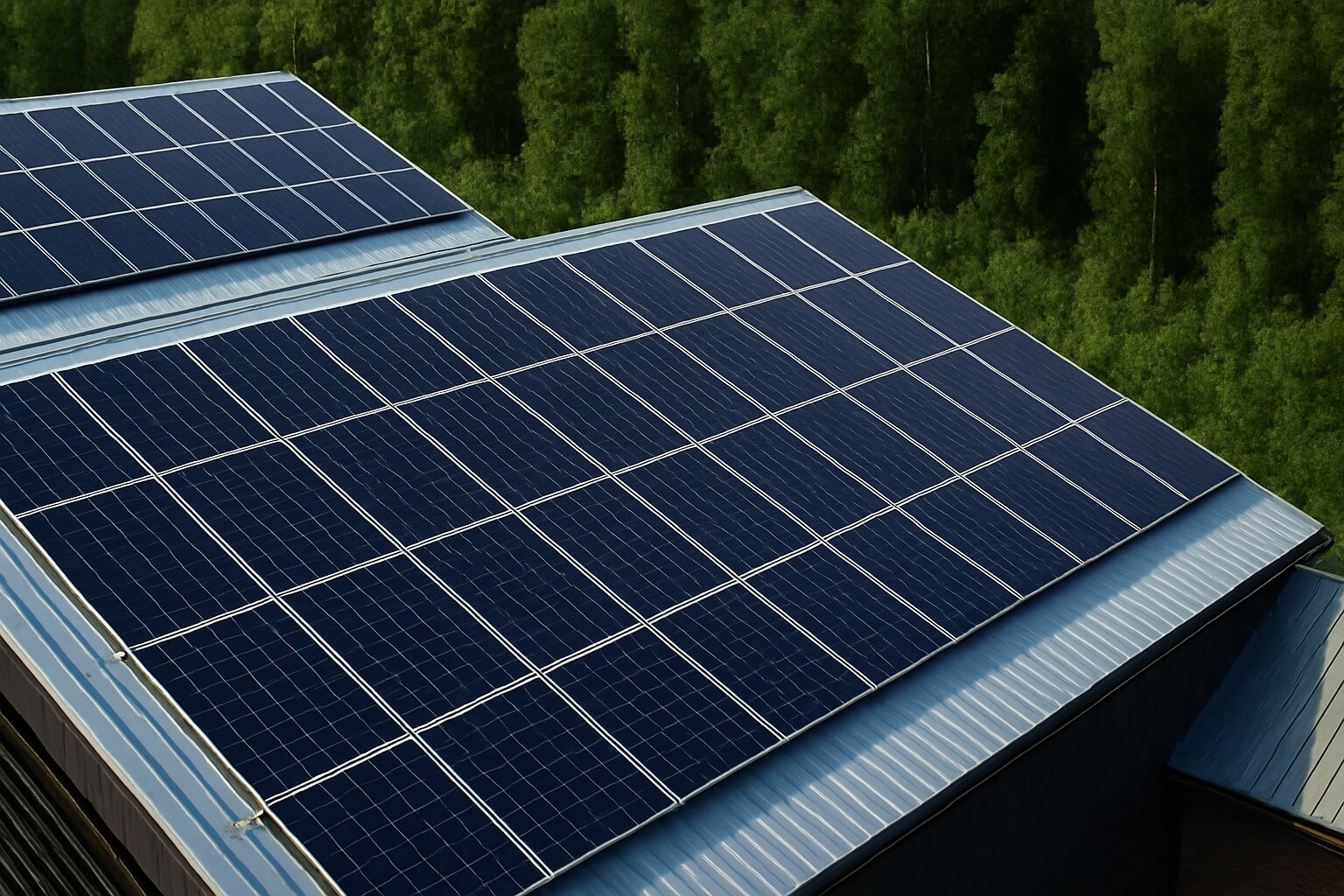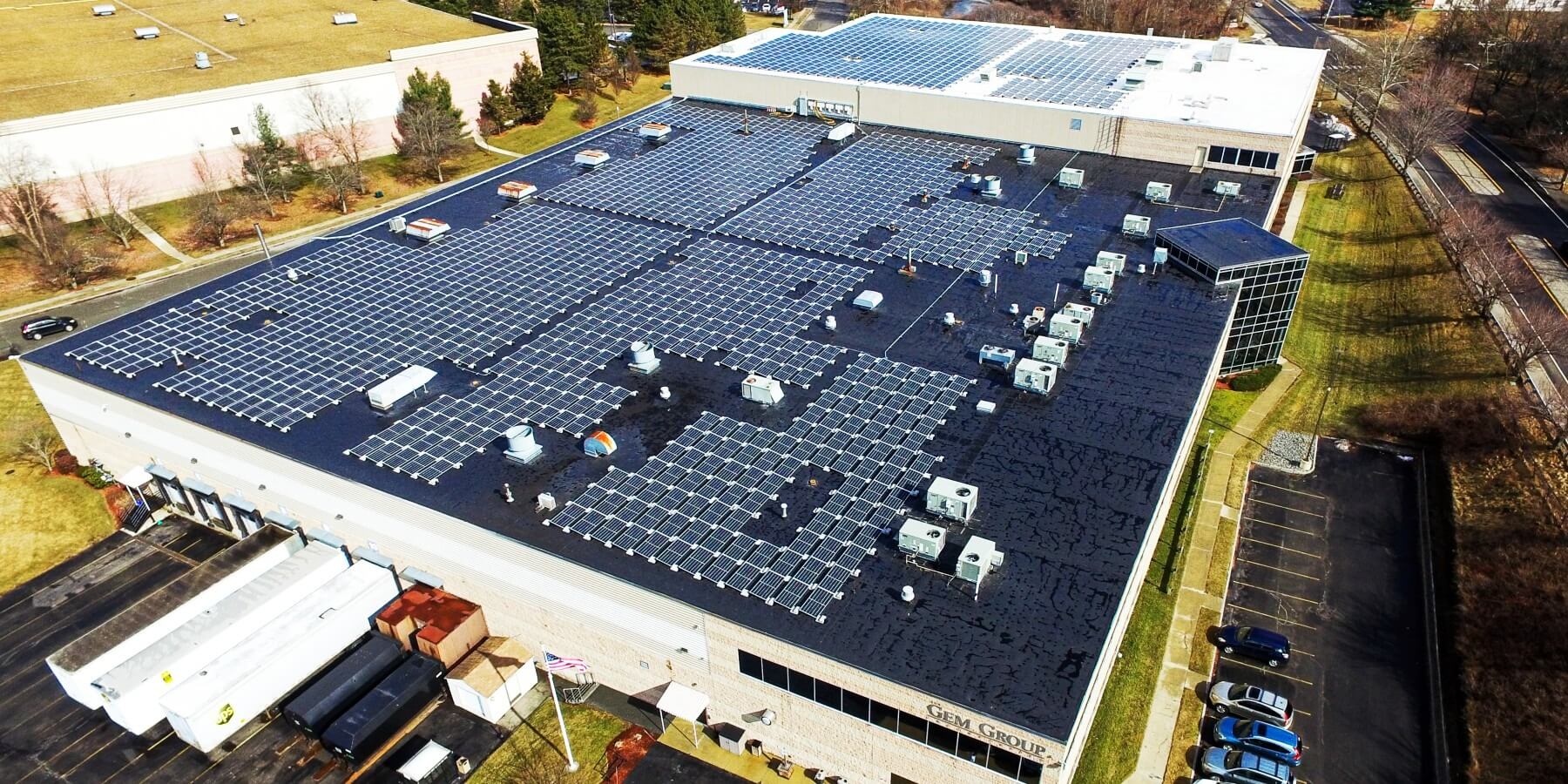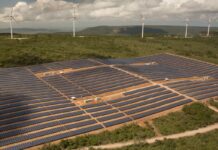
America is about to turn hundreds of empty rooftops into a massive source of clean energy. SolarEdge, a leading solar technology company, and Solar Landscape, a major rooftop solar developer, have announced a partnership that will create the largest rooftop solar project in the nation’s history.
More than 500 commercial and industrial buildings across the United States will soon carry solar panels powerful enough to generate 630 megawatts of electricity.
The project is designed to take advantage of unused warehouse space and feed energy directly into the grid at a time when demand for power keeps rising.
By the time the installations are complete, they could provide enough electricity to power around 80,000 homes.
Key Takeaways
- Biggest rooftop solar project in the country: Over 500 large buildings across the U.S. will get solar panels.
- Enough power for thousands of homes: The panels will make about 630 megawatts of electricity, which could run around 80,000 houses.
- Making use of empty rooftops: Wide, flat warehouse roofs that usually sit unused will be turned into mini power plants.
- Extra money for building owners: Renting out rooftop space could add 3-5 percent more income for businesses.
- Made in America: The solar equipment will come from U.S. factories, supporting about 2,000 jobs.
- Sharing power with neighbors: Some of the energy will go straight to the grid so local families can sign up and save on bills without needing panels on their own homes.
- Fast timeline: The work is planned for 2025-2026, before key federal tax breaks end in late 2025.
- Stronger local power: Solar panels spread across many rooftops help keep the grid steady during times when demand is high.
Project Scale and Power Output

The SolarEdge and Solar Landscape partnership is set to build the largest rooftop solar project ever attempted in the United States.
Covering more than 500 commercial and industrial buildings, the project will deliver 630 megawatts (MW) of clean power.
That amount of energy is enough to run around 80,000 American homes.
How Big Is 630 Megawatts?
- Equivalent to powering a mid-sized city
- More than double the capacity of many existing rooftop solar projects
- Roughly the same as a traditional small natural gas plant
Comparing Rooftop Solar With Other Projects
| Project Type | Average Size | Homes Powered | Land Use |
|---|---|---|---|
| Rooftop Solar (SolarEdge-Solar Landscape) | 630 MW | ~80,000 | Uses existing rooftops |
| Typical Utility-Scale Solar Farm | 500-700 MW | 70,000-90,000 | Requires hundreds of acres of land |
| Onshore Wind Farm (average) | 200-300 MW | 30,000-40,000 | Needs a large open land |
- Rooftop solar avoids conflicts over land use, since it builds on empty space already in place.
- Distributed generation means power is created closer to where it is needed, cutting transmission losses.
- Large flat rooftops, especially warehouses, give solar panels the perfect angle and room for wide-scale installation.
Experts estimate that if all warehouses in the U.S. were fitted with solar, they could generate around 185 terawatt-hours annually.
That equals about 16 percent of U.S. household electricity needs – showing how much untapped potential is still available.
We really hope this project won’t end the same way as Ivanpah.
Why Warehouse Rooftops Are the Perfect Fit

Commercial rooftops, especially warehouses, are some of the most underused spaces in the U.S. Most sit flat, wide, and empty.
That makes them an ideal spot for solar panels, without the need to clear land or disrupt neighborhoods.
Key Advantages of Warehouse Rooftops
- Size: Many warehouses stretch across a million square feet or more.
- Flat design: Panels can be installed faster and at a lower cost.
- Urban proximity: Warehouses are often located near cities, which makes it easier to deliver power directly to the grid.
- No land conflict: No farms, forests, or open fields are lost to solar development.
How Big Are These Roofs?
To picture it, Shaun Keegan of Solar Landscape explained to the Wall Street Journal that one rooftop can be as large as 10 Walmart stores combined.
Joseph Osha, an energy analyst at Guggenheim Securities, notes that rooftop solar is especially valuable during times of stress on the power grid.
Panels on warehouses can help balance electricity needs in real time, especially when paired with batteries.
Benefits for Businesses and Communities
The rooftop solar project is not only about adding energy to the grid. It also creates financial and social benefits that ripple across local economies.
Business Benefits
- Extra income: Leasing rooftop space adds 3-5 percent to net operating income for property owners.
- Lower costs: Companies that use solar power on-site reduce their electricity bills.
- Sustainability edge: Businesses gain environmental credibility, which matters to customers and investors.
Community Benefits
- Community solar programs: Homeowners and renters nearby can subscribe to receive part of the solar power, lowering their bills without needing panels on their own roofs.
- Grid stability: Distributed rooftop solar helps prevent blackouts by easing strain during peak demand.
- Health and environment: Cleaner energy means fewer emissions from fossil fuels, which improves local air quality.
Rooftop solar can transform energy costs into a source of profit. For communities, it is a way to access clean energy without high upfront costs, creating a shared win-win situation.
Jobs, Manufacturing, and the U.S. Economy
The SolarEdge-Solar Landscape deal is not only about generating clean power. It is also designed to strengthen U.S. manufacturing and bring more jobs into the clean energy sector.
Made in America
SolarEdge is supplying U.S.-made solar inverters, power optimizers, and other equipment for the project.
By using American factories, the partnership qualifies for federal incentives that reward domestic content.
Job Creation
- About 2,000 U.S. factory jobs are already tied to SolarEdge facilities.
- The project will also create new roles in installation, maintenance, and grid integration.
- Local economies benefit when property owners lease rooftops, since that income often flows back into building upgrades and services.
By focusing on American-made technology, the project strengthens supply chains at a time when energy independence is a major policy goal.
It also ensures the clean energy transition creates visible, lasting benefits at home.
We think that even Donald Trump will love this project, even though he claimed that solar energy is among the most unreliable clean energy solutions.
Timeline and Future Impact
The project is running on a tight schedule, with clear milestones that connect directly to federal deadlines and energy goals. Here is how the rollout is expected to unfold:
Project Timeline
- Early 2025: Preparations and site assessments on selected rooftops begin. Engineering teams evaluate structures and grid connections.
- Spring 2025: First wave of rooftop installations starts on large warehouses near major cities.
- Summer-Fall 2025: Construction ramps up nationwide. Dozens of rooftops are being fitted with panels every month.
- December 31, 2025: Deadline for federal solar tax incentives. Companies aim to have most capacity installed by this date.
- 2026: Final rooftops completed, system testing and full integration with regional grids finished.
Federal Incentives Driving the Push
The rooftop installations are racing against the clock. Current federal solar tax credits provide a major financial boost, but they are scheduled to expire at the end of 2025.
A Shift in Energy Strategy
Unlike traditional power plants that can take years to approve and build, rooftop solar projects can scale quickly.
By spreading panels across hundreds of buildings, clean energy gets added to the grid in months, not decades.
- Faster to build than most new gas or coal facilities
- Less community resistance compared to big land-based projects
- Positioned close to demand, so cities benefit directly
Looking Ahead
If the 630 MW target is met, the project could signal a new phase for solar in America.
Instead of focusing only on massive ground-based farms in rural areas, the country could turn more toward rooftops that already exist.
| Energy Source | Build Time | Land Impact | Grid Benefit |
|---|---|---|---|
| Rooftop Solar | Months | None (existing roofs) | Distributed, near cities |
| Utility Solar Farm | 2-4 years | Hundreds of acres | Bulk generation, remote |
| Gas Plant | 3-5 years | Industrial land | Centralized, dependent on fuel |
Analysts suggest that large-scale rooftop projects could become a permanent part of the national strategy if results prove successful.
By proving that warehouse roofs can handle significant power output, the U.S. sets a precedent for every major logistics hub, retail center, and industrial park in the country.
According to research published in Nature.com, it can even slow down the effects of global warming.
Closing Thoughts
America is preparing for one of its most ambitious clean energy experiments. By turning hundreds of warehouse rooftops into power plants, SolarEdge and Solar Landscape are proving that energy can come from the spaces we already have, not only from new land developments. The numbers are big, the timeline is tight, and the potential reach is national.
For property owners, the project opens a new stream of income. For communities, it creates a path to cheaper and cleaner power without the need to install anything at home.
For the U.S. economy, it strengthens domestic manufacturing and adds jobs in both factories and on-site construction.
Read Next: Portable Wind Turbines Review
















